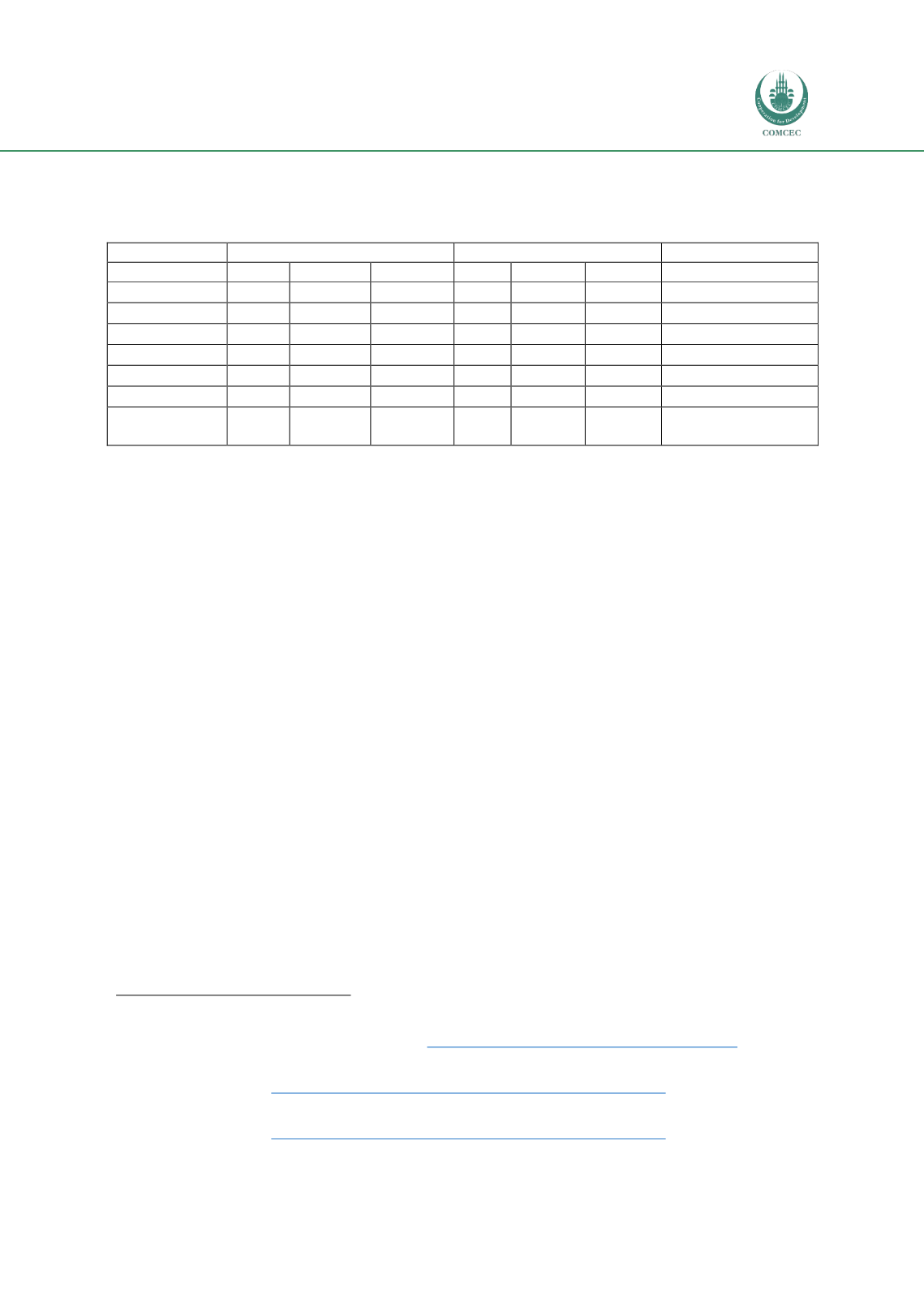

Improving Agricultural Market Performance:
Creation and Development of Market Institutions
99
Chetoui trees).
155
This is demonstrated by the high quantities of vegetables (3.34 million
tonnes), cereals (2.35 million tonnes), and fruits (1.31 million tonnes).
156
Table 2
–
Tunisian (TUN)/World agricultural production and exports, selected commodities
2016* Production (‘000 MT)
2016* Exports (‘000 MT)
Imports (‘000 MT)
TUN
World
TUN % TUN
World
TUN %
Olive Oil
200
3,120
6%
0.140
0.92
15%
Wheat
0.99
739,533
0%
/
178,550
0%
1.98
Tomatoes
1,250
170,750
1%
20.5
17,167
0%
39.9
Citrus fruit**
560
91,800
1%
26
9,650
0%
Dates***
199
7600
3%
104.9
8,498
1%
Almonds****
66.7
2,697
2%
0.27
3,223
0%
6.8
Wine
(000 hl)
253
269,900
0%
19
103,349
0%
* or last available year
** world data refers to oranges, tangerines, grapefruits and lemons
*** exports include figs, pineapples etc. (HS 0804 classification)
**** exports and imports refer to nuts according to HS 0802 classification
Source:
USDA Foreign Agricultural Service (2017); International Trade Center (2017); FAO (2017); The
International Organisation of Vine and Wine (2017)
Handling and Storage
With regards to handling and storage, Tunisia currently lacks sufficient post-harvest
management and storage capacity. This is particularly important for fresh products, which
require special supply chain activities to anticipate on the freshness, perishability, and quality
of fresh agricultural products. Such infrastructure is currently insufficient, requiring a better
management of supply chains, post-harvest infrastructure, and markets access. Storage
capacity can be increased for grains through grain silos
157
given the variety in grain harvests
and limited storage capacity. The same is true for cold storage capacity.
158
The Tunisian
Government, however, provides incentives to support companies up to 15% of their
investment in constructing storage facilities and equipment.
159
Processing and Packaging
As mentioned, the agri-processing and packaging stage has historically dominated by a small
number of very large agr-processing companies. However, Tunisia’s agri-processing sector has
opened up for foreign investment. The agri-processing industry received a total of US$25
million of FDI – especially from France, Italy, and The Netherlands - in 2014.
160
This is the only
part of the agricultural sector open for foreign investment as foreign investors can’t own or
rent agricultural land but need to co-manage this with a Tunisian national.
161
155
Interview conducted with Foreign Investment Promotion Agency in Tunis, May 15, 2017
156
COMCEC (2016), COMEC Agricultural Outlook 2016, pp. 55-90, Ankara: COMCEC.
157
Export.gov (2016), Tunisia - Agriculture, available a
t https://www.export.gov/article?id=Tunisia-agriculture [Accessed
May 2017].
158
European Commission DG Enterprise and Industry (2013), Business Opportunities in the Mediterranean – focus on agri-
food in Tunisia, available a
t http://www.taasti.org/business-opptunities-in-the-mediterranean.pdf [Accessed May 2017].
159
Interview conducted with Agence de Promotion des Investissements Agricoles in Tunis, May 16, 2017
160
European Commission DG Enterprise and Industry (2013), Business Opportunities in the Mediterranean – focus on agri-
food in Tunisia, available a
t http://www.taasti.org/business-opptunities-in-the-mediterranean.pdf [Accessed May 2017].
161
Ibid


















